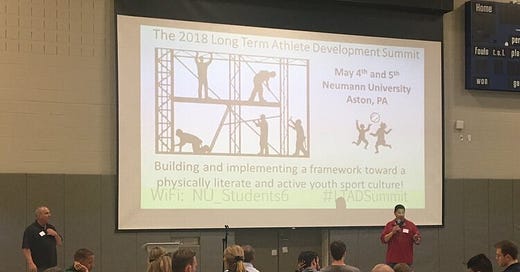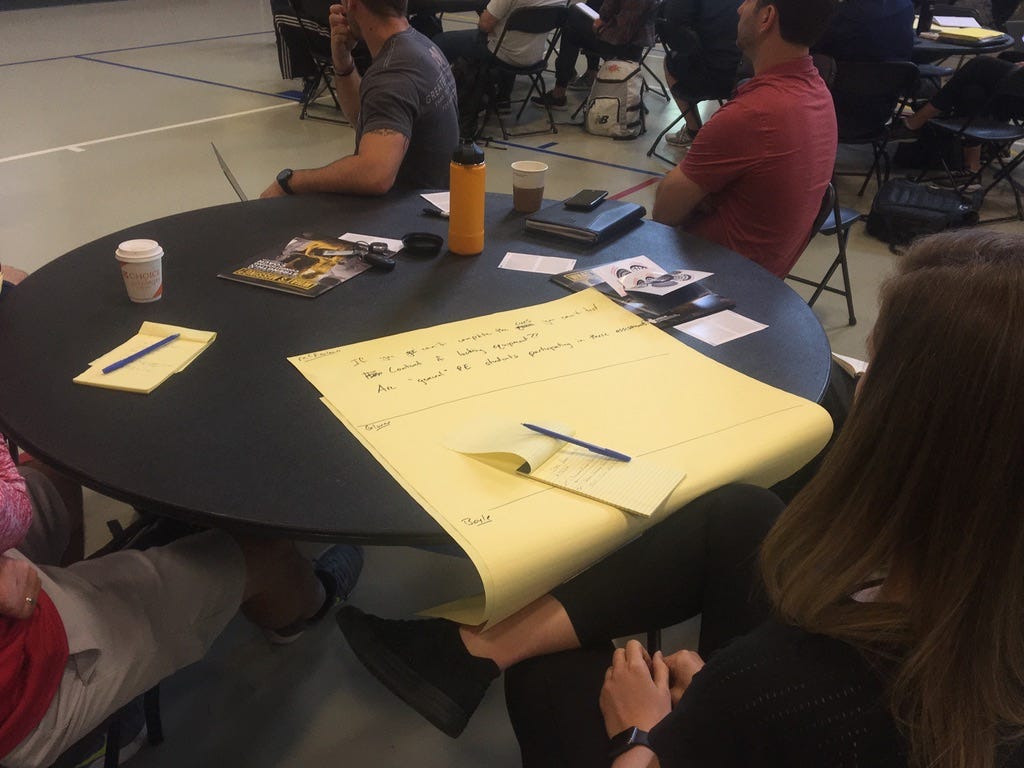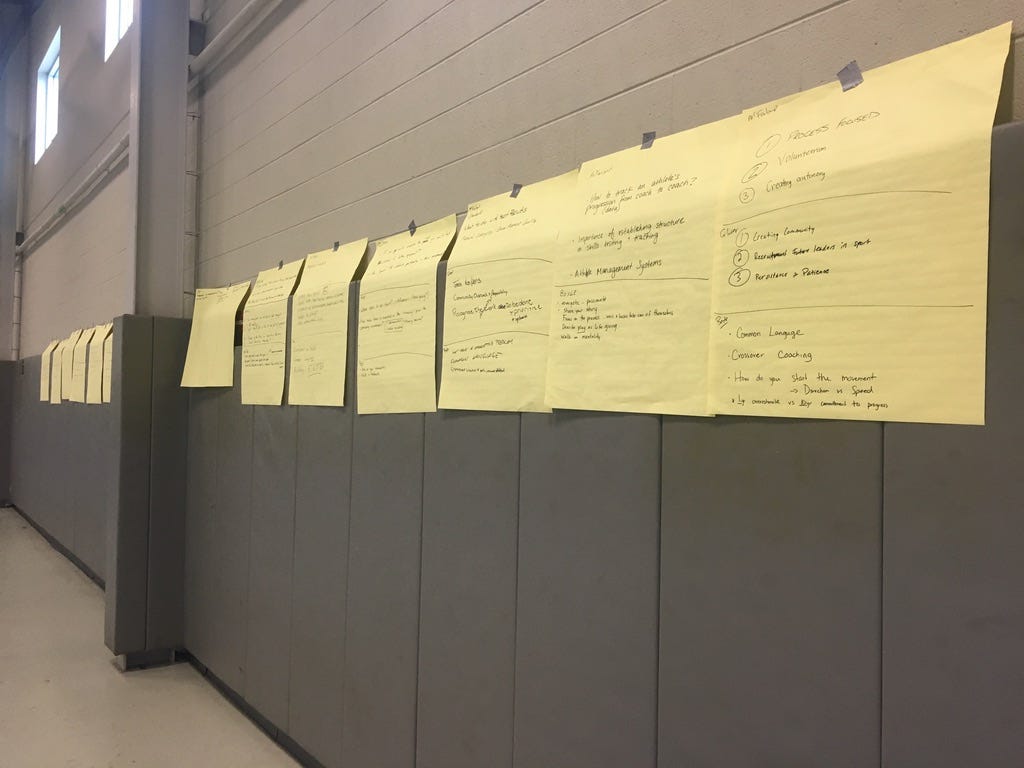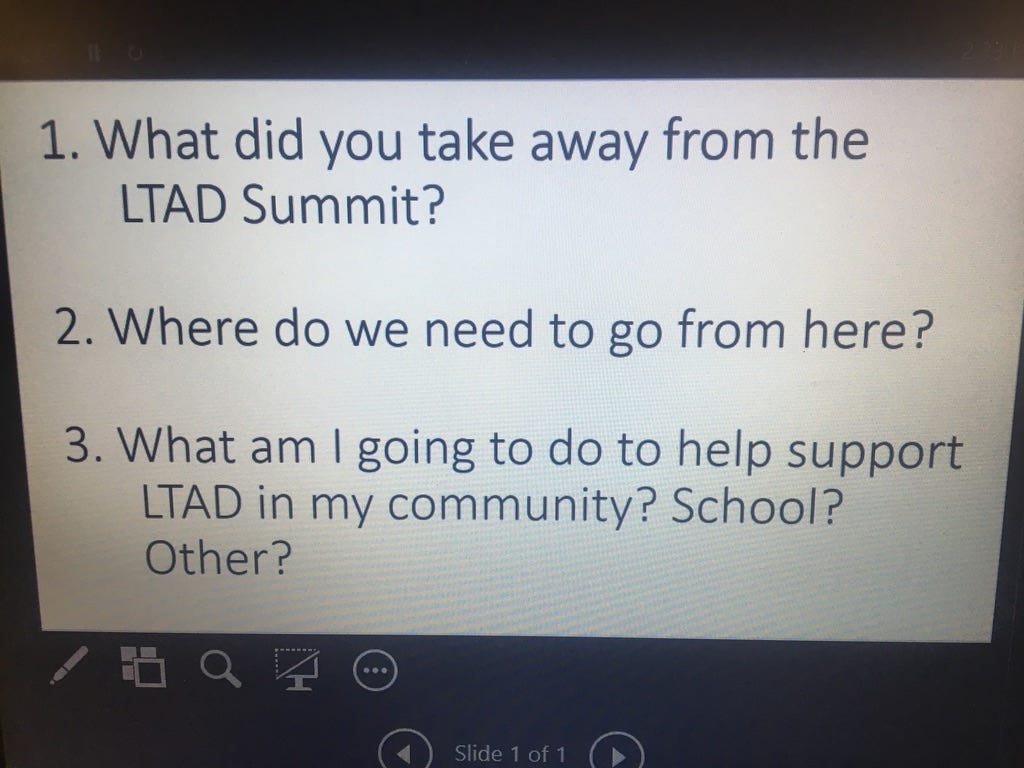A New Approach to Conferences: Lessons from Ted Talks, Pubs, Pizza, and Anthropology
Rapid fire, round table discussion, hands-on activities and more
About 5-6 years ago, myself and colleagues Tony Moreno and Rick Howard hosted a 1-day event called the LTAD Playground. We held this event across the U.S. to raise awareness about and to educate and help key stakeholders implement long-term athletic development (LTAD) in schools, clubs, or communities. This event had a purposeful and unique format. The purpose of this article is to highlight its rationale and some specifics with the hope that others, including national organizations, will adopt in whole or in part for enhanced learning and sharing of information, ideas, and practical hands-on experiences at clinics and conferences.
The Public House and the Germination of Ideas
Many of us have experienced and acknowledge that some of the best ideas and conversations are shared in a public house – otherwise known as ‘the pub’ (or could also be a coffeehouse for that matter). As defined by Wikipedia, “the pub is a relaxed, social establishment and in many places a focal point of the community”. Indeed, what better place, or more practically, what better format than that of the pub to share a conversation on a topic of interest to all parties at the table.
Ted Talks and Shared Conversations: A Recipe for Stimulation and Involvement
We are all familiar with the typical conference format: A presenter gets up in front of the group and presents for 45-50 minutes. Then maybe a short 5-10 min Q&A in which sometimes only 1 question is asked. Then, we are onto our next 45-50 min presentation, etc. ….. So, that’s 1 person dominating the conversation with many attendees not saying a word all day. With all due respect to the presenters, there are just too many darn smart and experienced people to just let just one or a few people control the dialogue and narrative of the field!
In May 2017, I attended the USOC High Performance Summit, where the 50-min presentations were followed by 20-30 min small group breakouts (just like in the pub!). This got me thinking. What about 18-minute Ted-Talks followed by small group discussion?
I’m a huge fan of Ted Talks and have read the book ‘Talk Like Ted’, where the scientific underpinnings of the 18-minute rule are discussed. Basically, humans get a cognitive backlog after listening for longer than 18 minutes. In addition, this time constraint forces the presenter to cull down what they really want to say. They basically need to be clear and concise getting right to the key points.
The idea is to then follow each 18-minute “Ted Talk” with a 10-min shared discussion at a round table (literally, a round table) where about 4-6 individuals can easily share a conversation. Each attendee brings a unique and different background, knowledge and experiences to share – and as humans, we want to be heard!
So, image listening to Presenter A (put in your favorite presenter here) discuss Topic A (a favorite topic here) for 18-minutes and then responding to the talk and also sharing your experiences or approaches or thoughts with 4 other attendees around a table. Wow! Everyone gets to participate and learn from each other.
Note: Having only 4-6 people at each table is purposeful. It follows the “2-pizza rule” of Amazon CEO Jeff Bezos, which has been shown to enhance productivity. And, it supports the number of people whom we would consider in our “inner circle” and hold the most meaning and connection per the anthropologist evolutionary psychologist Robin Dunbar (see Dunbar’s number). Think about a pre-historic family huddled around the fire listening to stories. Similar to the pub, eh!
At the conclusion of the shared conversation for that particular session or speaker, each round table writes 3 important ideas on a big 25 inch x 30 inch sticky post-it note placed in the middle of the table. These sheets of paper are then collected and hung up on a wall for everyone to view, and also used to summarize the conference at the end.
Attendees are also required to rotate tables after every presentation. This always them to network and share conversation with everyone at the conference (ya, I know – an introverts nightmare!).
It’s also important to mention that attendance is capped at 40-50 persons. Why? Well, let’s go back to evolutionary anthropology. If we reconstruct the Pleistocene societies, a small group (or band) ranged from 30-50 people. Everyone knew each other and was comfortable sharing a conversation.
Telling a Story, Instead of Disjointed Topics
Another purposeful feature of the LTAD Playground is that it tells a story. In other words, there is a logical flow from the start to the end of the conference instead of a hodge-podge of topics randomly scheduled like most conferences.
The LTAD Playground is more like a ‘mini-course’. Here is our typical format. It begins with general introductions, housekeeping, the day’s agenda and then a community building activity. The first major section includes the building blocks and basic principles of LTAD (LTAD in Theory) via the National Strength and Conditioning Association’s position paper and the USOC’s American Development Model. As mentioned above, these two talks are followed by small group discussion at each round table. This initial section sets the stage (foundation) for the remainder of the conference.
The next section - ‘LTAD in Action’ – is a series of 18-min Ted Talks where three practitioners share their strategies in the school setting, the private sector, and the community. Again, each talk is followed by 10-min round table discussion.
The third section is a hands-on, practical – LTAD in Practice - where attendees get up out of your chair and move = practice! This includes a learn by doing and active exploration of various methods of teaching fundamental movement skills, dynamic warm-up, small-sided games, and foundational strength training exercises.
So now we have gone from basic principles to LTAD in Action to practical examples. Perhaps, the biggest challenge of implementing LTAD is selling, convincing, and persuading stakeholders and building buy-in which is the focus of the fourth section.
At this time, the full spectrum from basic principles to practical examples to building buy-in and accountability has been covered, and it is time to summarize and conclude the event with the Town Hall. Again, we do not want this to be a one-person show and thus all attendees are given time to reflect on the event, looking over their notes and the big post it notes along with consideration of key questions. The floor is the open to discussion, questioning, debate, and dialogue in a town hall environment.
In Closing
I recently discussed this format with a few colleagues who adopted it for coaches clinics for baseball hitting and strength and conditioning, and I’ve had a number of conversations with people that spelled out this article – and every time the person says, “wow, that sounds awesome” or “yeah, I hate going to conferences anymore. Same old stuff” or “I went to the conference but the best conversations were at the pub.”. This feedback along with understanding the science and best practice of learning and professional development is a clear reason for changing the status quo of conferences and workshops.
In this article, I have outlined a new way of designing and conducting conferences or workshops. I hope you found it thought provoking and helpful for planning your next event. As always, comments and feedback welcomed.
If you are interested in hosting a LTAD Playground, please contact me at joeeisenmann@gmail.com









